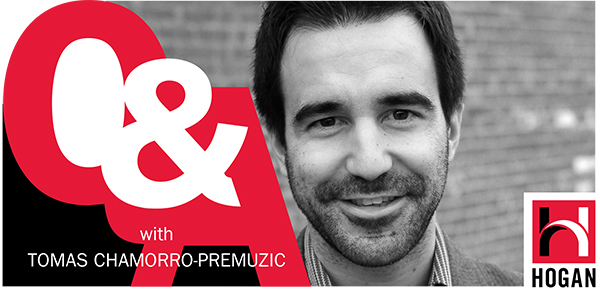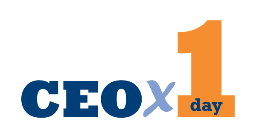
A Q&A with Dr. Tomas Chamorro-Premuzic | Creativity vs. Innovation
We sat down with Tomas Chamorro-Premuzic, Hogan’s VP of Research and Innovation, to pick his brain on the ups and downs of creativity at work.
What makes innovation valuable to an organization?
Experts disagree on the type and level of innovation that is most beneficial for organizations. Some studies suggest that radical innovation confers sustainable competitive advantages, but others show that “mild” innovation – think iPhone 5 rather than the original iPhone – is generally more effective, not least because it reduces market uncertainty.
Can we accurately evaluate the merit of our own ideas?
Most people fall into the trap of an illusory superiority that causes them to overestimate their creative talent, just as in other domains of competence (e.g., 90% of drivers claim to be above average – a mathematical improbability). It is therefore clear that we cannot rely on people’s self-evaluation to determine whether their ideas are creative or not.
Who will generate creative ideas?
Research shows that some people are disproportionately more likely to come up with novel and useful ideas, and that – irrespective of their field of expertise, job title, and occupational
background – these creative individuals tend to display a recurrent set of psychological characteristics and behaviors. As summarized in a detailed review of over 100 scientific studies creative people tend to be better at identifying (rather than solving) problems, they are passionate and sensitive, and, above all, they tend to have a hungry mind: they are open to new experiences, nonconformist, and curious.
What is the difference between creativity and innovation?
Execution – the capacity to turn an idea into a successful service, product, or venture. Entrepreneurship is the process by which creative ideas become useful innovations.
Is creativity alone sufficient for innovation?
No. Innovation also requires the development, production, and implementation of an idea. This is why the number of “latent” innovators is far larger than the number of actual innovations, and why we all have at some point generated great ideas that we never bothered to implement.
What are some of the core characteristics of entrepreneurial people?
I can think of five:
1) An opportunistic mindset that helps them identify gaps in the market. Opportunities are at the heart of entrepreneurship and innovation, and some people are much more alert to them than others.
2) Formal education or training, which are essential for noticing new opportunities or interpreting events as promising opportunities.
3) Proactivity and a high degree of persistence, which enable them to exploit the opportunities they identify. Above all, effective innovators are more driven, resilient, and energetic than their counterparts.
4) A healthy dose of prudence. Contrary to what many people think, successful innovators are
more organized, cautious, and risk-averse than the general population.
5) Social capital – serial innovators tend to use their connections and networks to mobilize resources and build strong alliances, both internally and externally; innovation is always the product of teams.
What about vision?
Even when people possess these five characteristics, true innovation is unlikely to occur in the absence of a meaningful mission or clear long-term vision. Indeed, vision is where entrepreneurship meets leadership, regardless of how creative, opportunistic, or proactive you are, the ability to propel others toward innovation is a critical feature of successful innovation. Without it, you can’t attract the right talent, build and empower teams, or ensure that you remain innovative even after attaining success.
Anything else you’d like to add?
In short, there is no point in just hoping for a breakthrough idea – what matters is the ability
to generate many ideas, discover the right opportunities to develop them, and act with drive
and dedication to achieve a meaningful goal. Ideas don’t make people successful – it’s the
other way around.
###
Tomas serves as Hogan’s vice president of research and innovation, spearheading research and development for new products. An international authority in psychological profiling, consumer analytics, and talent management, he represents Hogan at conferences worldwide. Tomas also is a professor of Business Psychology at University College London (UCL), and has previously taught at New York University and the London School of Economics.
Download PDF of this Q&A


 After a rigorous selection process designed to gauge
After a rigorous selection process designed to gauge  Hogan announced a strategic partnership with
Hogan announced a strategic partnership with 
 Download a PDF
Download a PDF